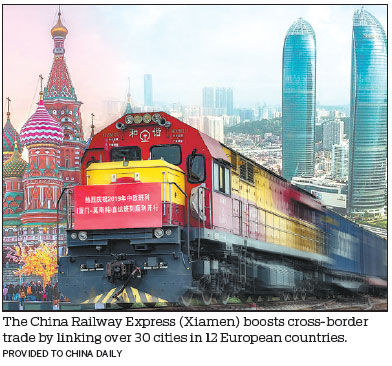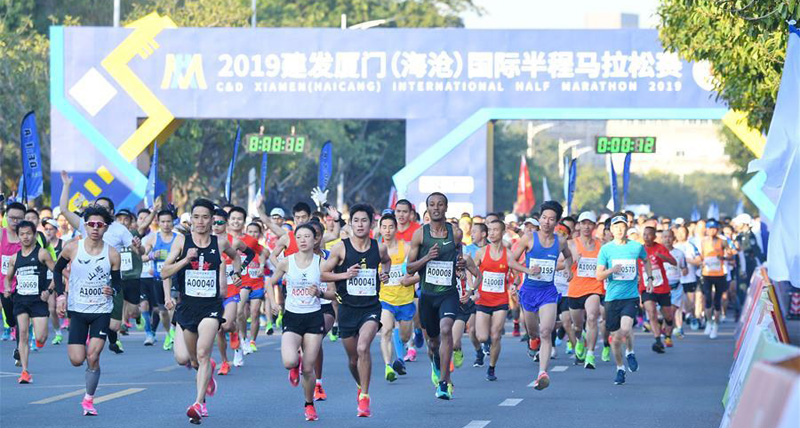Railways push trade ahead via key routes
By Yuan Shenggao| China Daily| Updated: Oct 31, 2019

Xiamen, an important junction on the ancient maritime Silk Road in East China's Fujian province, is again proving its usefulness in terms of the 21st Century Maritime Silk Road and the Silk Road Economic Belt in that it is connecting the two via the China Railway Express (Xiamen).
The cargo transport railway service made its first trip from the Haicang harbor area, part of the Xiamen Area of the China (Fujian) Pilot Free Trade Zone in August 2015.
It was the first time for the China Railway Express to depart from a free-trade zone in China, according to the local authority.
Now three lines which link Xiamen with Hamburg in Germany, Moscow in Russia and Almaty in Kazakhstan are in operation. More than 30 cities in 12 European countries are also connected to Xiamen by this railway.
Three trains make trips to Hamburg each week and one train will head to Almaty. Official figures show that the cargo railway service has made 563 trips to Hamburg and Almaty with a total value of freight exceeding 10.8 billion yuan from 2015 to Sept 30.
Sea-rail combined transportation is one of the key features of China Railway Express (Xiamen). Over the past few years, local authorities have made great efforts in improving service efficiency and shortening goods transit times so that the city can become a global goods transit hub.
The city received approval from the General Administration of Customs to provide cargo transit services in September 2018. With this approval, qualified cargo shipped to Xiamen with a final destination in another country can be loaded onto express trains directly after customs declarations. The new service model shortens the time it takes for goods to transit Xiamen from three to four days to only one day.
The railway routes are providing greater convenience to traders in countries in East Asian and Southeast Asian countries and regions. Those traders can ship goods to Xiamen, a city known for its deepwater port, by sea and then transport them to Asia and Europe by train. Goods shipped from Xiamen can expect to arrive at destinations in Central Asia and Europe in 15 days and 20 days respectively.
The routes are becoming especially popular among traders from countries such as Japan, Thailand and South Korea.
A consignment of machinery and plastics valued at 540,000 yuan ($76,327) from India were loaded on the China Railway Express (Xiamen), beginning their journey to Tashkent, Uzbekistan, on Oct 1. It was the first time for China Railway Express (Xiamen) to transit goods from India to Central Asian countries.
It was estimated 35 to 37 days would be needed to transport the goods to their destination with rail-ocean transport, compared with nearly 60 days by using road transport.
Xiamen took part in the EU-China Smart and Secure Trade Lanes pilot project in 2017 to build smarter and more secure trade links with Europe. SSTL is a project between Europe and Asia in line with World Customs Organization SAFE Framework of Standards. It allows for the quickening of customs clearance with enhanced logistics. Goods transported to 25 ports in 10 European countries from Xiamen can enjoy such services.
Xiamen will continue to expand the network of the China Railway Express (Xiamen) to support China's Belt and Road Initiative.



 play
play